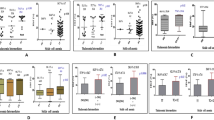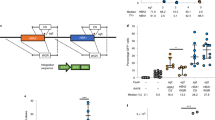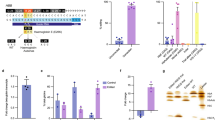Abstract
THE unstable haemoglobins are a group of well-defined haemoglobin variants associated clinically with haemolytic anaemia of varying severity1,2. The nature of the amino-acid substitutions reduces the stability of the haemoglobin molecule, and this results in precipitation within the red cell and formation of characteristic inclusions called Heinz bodies. The instability of this group of haemoglobins is also shown by their precipitation from solution when subjected to mild heating. The cellular inclusion bodies are generally not present unless the patient has been splenectomized, but can usually be induced by incubating the blood at 37° C for up to 48 h. Although it is generally accepted that the Heinz bodies consist of denaturation products of the abnormal Hb, as yet they have not been analysed directly, and there is some speculation as to their actual constitution2–4. In particular, it has been postulated that only the abnormal chains of the tetrameric Hb molecule precipitate, and that these may be lacking haem groups4. Some work has been done on the inclusion bodies which occur in the thalassaemias, in which there is impaired production of one of the polypeptide chains. Fessas et al.5 have shown that in β-thalassaemia, the peptide map of the inclusion bodies closely resembles that of pure α chains, and Rachmilewitz et al.6 have shown that in Hb H disease (α-thalassaemia) the inclusions are primarily β-chains largely present as haemichromes.
This is a preview of subscription content, access via your institution
Access options
Subscribe to this journal
Receive 51 print issues and online access
$199.00 per year
only $3.90 per issue
Buy this article
- Purchase on SpringerLink
- Instant access to full article PDF
Prices may be subject to local taxes which are calculated during checkout
Similar content being viewed by others
References
Carrell, R. W., and Lehmann, H., Seminars in Hematology, 6, 116 (1969).
White, J. M., and Dacie, J. V., Progr. Haematol., 7, 69 (1971).
Bunn, H. F., Seminars Hematol., 9, 3 (1972).
Jacob, H. S., Seminars Hematol., 7, 341 (1970).
Fessas, P., Loukopoulos, D., and Kaltsoya, A., Biochim. Biophys. Acta, 124, 430 (1966).
Rachmilewitz, E. A., Peisach, J., Bradley, T. B., and Blumberg, W. E., Nature, 222, 248 (1969).
Carrell, R. W., and Owen, M. C., Biochim. Biophys. Acta, 236, 507 (1971).
Dodge, J. T., Mitchell, C., and Hanahan, D. J., Arch. Biochem. Biophys., 100, 119 (1963).
Beale, D., Biochem. J., 103, 129 (1967).
Author information
Authors and Affiliations
Rights and permissions
About this article
Cite this article
WINTERBOURN, C., CARRELL, R. Characterization of Heinz Bodies in Unstable Haemoglobin Haemolytic Anaemia. Nature 240, 150–152 (1972). https://doi.org/10.1038/240150b0
Received:
Issue date:
DOI: https://doi.org/10.1038/240150b0



